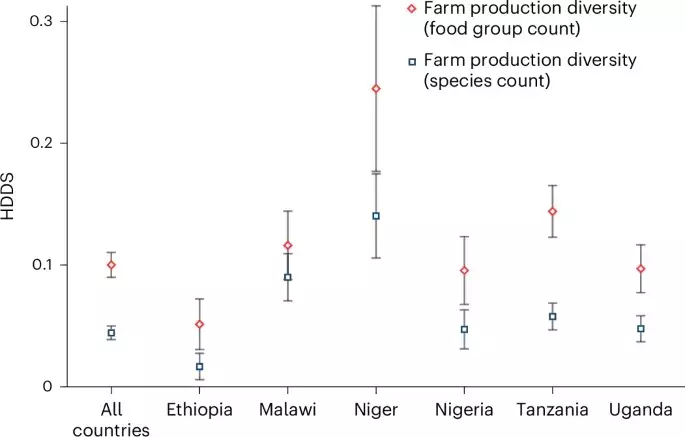Enhancing Rural Diets in Africa: The Role of Local and Regional Food Production Diversity

In rural African communities, the quality and diversity of diets remain critical concerns. A recent study analyzed panel data from six African countries—Ethiopia, Malawi, Niger, Nigeria, Tanzania, and Uganda—to explore how farm production diversity (FPD) and broader agricultural diversity impact household dietary diversity. The research reveals that while FPD has a positive association with dietary diversity, its effect is relatively modest. More significantly, market access and local/regional food production diversity play crucial roles in enhancing dietary quality. This finding underscores the need for policies that strengthen market infrastructure and diversification strategies beyond individual farms.
Detailed Insights into the Study
In the heart of rural Africa, during a time when nutritional deficiencies continue to plague many households, researchers embarked on an extensive investigation. Utilizing comprehensive panel data spanning from 2008 to 2022, they examined the relationship between farm production diversity and household dietary diversity across Ethiopia, Malawi, Niger, Nigeria, Tanzania, and Uganda. These regions, characterized by smallholder farming, provided a robust dataset for understanding the nuances of agricultural practices and their impact on nutrition.
The study found that farms in these countries cultivate an average of 5.5 different crop and livestock species, despite most holdings being less than two hectares. Interestingly, the highest number of species was observed in Ethiopia, contrasting with its lower dietary diversity scores. This discrepancy suggests that farm production diversity may not be the primary driver of dietary richness. Instead, market purchases contribute significantly more to household dietary diversity than own production, accounting for about 67% of consumed food value.
Further analysis revealed that the positive association between FPD and dietary diversity varies both within and between countries. In remote areas with limited market access, farm diversification plays a more vital role. For instance, in Niger, where agricultural potential is low, higher FPD is linked to better market engagement rather than subsistence farming. Conversely, in well-connected regions, village-, town-, and district-level production diversity also positively influence dietary diversity, highlighting the importance of broader spatial scales in diversification strategies.
Implications and Reflections
This study offers valuable insights for policymakers and practitioners aiming to improve rural diets in Africa. While increasing the diversity of individual farms can have some benefits, it should not be seen as a one-size-fits-all solution. Instead, efforts should focus on enhancing market access and strengthening local markets, ensuring that diverse foods are available and accessible. Moreover, promoting regional food system diversification can create new opportunities for farmers, driven by market incentives rather than mere subsistence needs.
Ultimately, this research emphasizes the complexity of improving dietary quality in rural settings. It calls for integrated approaches that consider multiple factors, including market infrastructure, non-farm income sources, and technological advancements in agriculture. By addressing these elements holistically, we can pave the way for more sustainable and nutritious food systems in rural Africa.